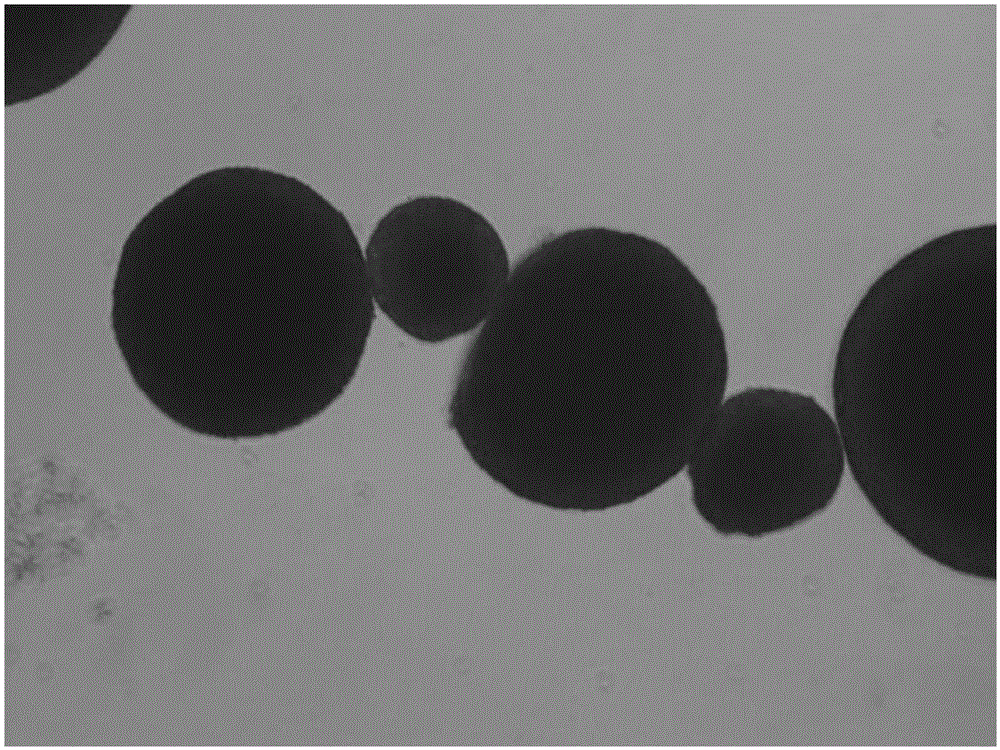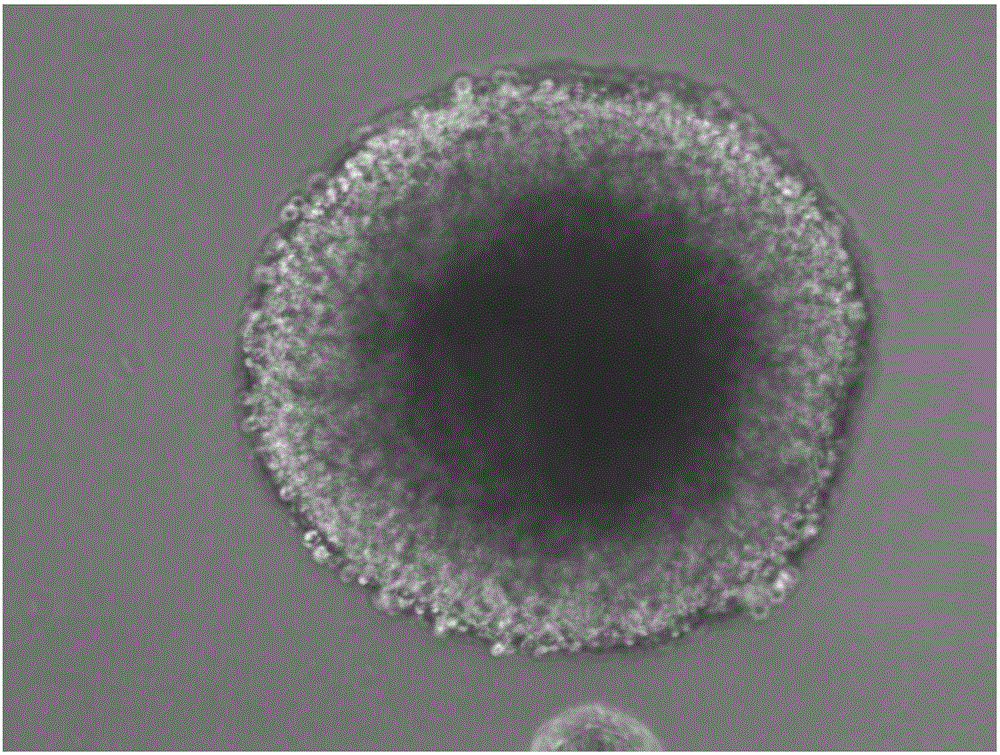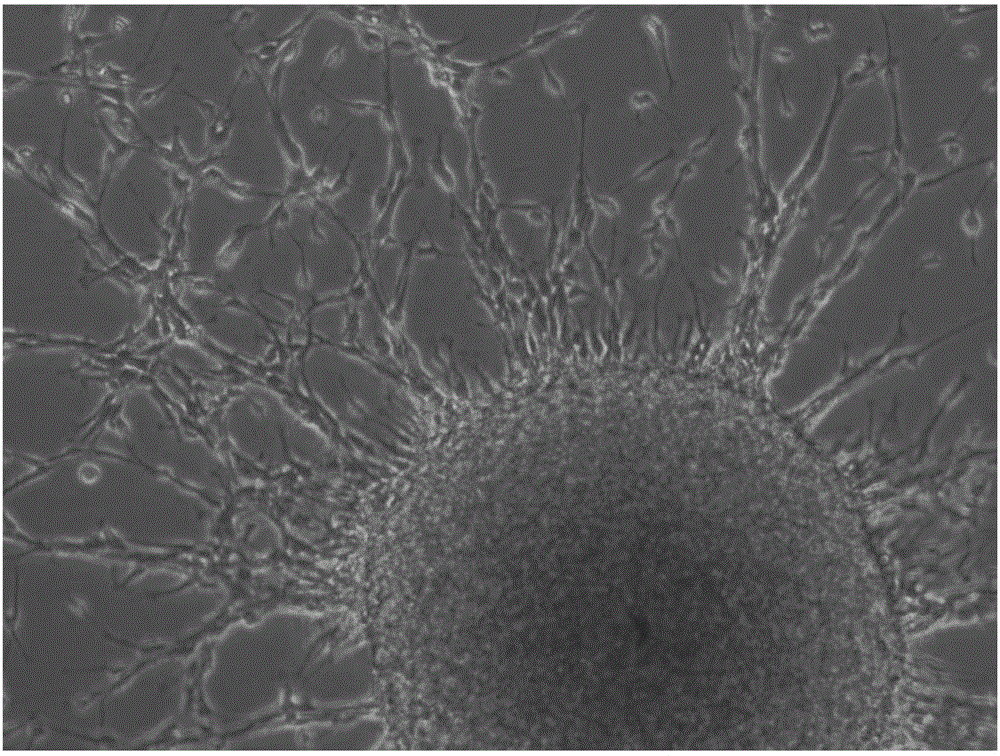Neural stem cells medium and method for performing human neural stem cells in-vitro long-term culture and amplification by using neural stem cells medium
A neural stem cell and culture medium technology, applied in the field of neural stem cell culture, can solve the problems of mixed sources of neural stem cells, difficulty in obtaining neural stem cells, lack of embryonic or fetal sources, etc.
- Summary
- Abstract
- Description
- Claims
- Application Information
AI Technical Summary
Problems solved by technology
Method used
Image
Examples
Embodiment 1
[0054] Embodiment 1 The culture expansion of neural stem cells
[0055] (1) Neural stem cell culture: Take the prepared fetal brain-derived hippocampal neural stem cells, press 1-2x10 6 / ml cells were grown in cell culture flasks. Neural stem cell culture medium was used for culture and expansion, and the cell bottle was placed in 5% CO 2 , 37 ℃ temperature incubator for cultivation. According to the condition of cell proliferation, half of the culture medium is generally changed every 3-4 days. The components of the neural stem cell culture medium are:
[0056]
[0057] The preparation method of this neural stem cell culture medium is: take 12gDMEM / F12 culture medium and mix with 1000mL sterile deionized water, add 4-hydroxyethylpiperazine ethanesulfonic acid and stir evenly to make basic culture medium, make the pH value of the solution be controlled at 7.0~7.1; then add the remaining components and mix well.
[0058] (2) The passage expansion method is as follows: t...
Embodiment 2
[0059] Example 2 Nestin Identification of Neural Stem Cells
[0060] Neural stem cell-specific antigen nestin (nestin) is a specific antigen commonly used to dispose of neural stem cells and other stem cells. Immunofluorescence staining with nestin (nestin) antibody was used to preliminarily identify neural stem cells.
[0061] Neural stem cell spheres cultured continuously for 10 months were directly planted on poly-lysine-coated glass coverslips at a cell density of 5×10 4 5-6 days later, immunofluorescent staining was performed with nestin antibody.
[0062] ① Use a pipette to take 3-5 neural stem cell sphere suspensions that have been cultured for 10 months and drop them on the poly-lysine-coated slides, and place them in a 37°C incubator for 24 hours to make the cells adhere to the slides.
[0063] ② Fix with 4% paraformaldehyde + 0.3% glutaraldehyde for 15 minutes.
[0064] ③ After washing with DPBS buffer for 3 times, block with DPBS containing 5% normal goat serum (c...
Embodiment 3
[0068] Example 3 Differentiation and Identification of Neural Stem Cells
[0069] Neural stem cells can differentiate into neurons, astrocytes and oligodendrocytes. Neurons contain β-TublinIII antigen, and the cells are fluorescently labeled with β-TublinIII antibody to detect whether they are neurons. Astrocytes contain GFAP antigen protein, and the cells are fluorescently labeled with GFAP antibody to detect whether they are astrocytes. The oligodendrocytes contain (Gal-C) antigen protein, and the cells are fluorescently labeled with Gal-C antibody to detect whether they are oligodendrocytes.
[0070] experimental method
[0071] (1) The neural stem cell spheres cultured for 10 months were directly pipetted or digested with 0.125% trypsin and 0.5mMEDTA·4Na solution to make a single cell suspension.
[0072] (2) Cells in 5×10 4 Seed on polylysine (100mg / ml)-coated glass coverslips per slice density, add 2% fetal bovine serum (FBS) to DMEM / F12 medium, B27 additive (1:50 di...
PUM
 Login to View More
Login to View More Abstract
Description
Claims
Application Information
 Login to View More
Login to View More - R&D
- Intellectual Property
- Life Sciences
- Materials
- Tech Scout
- Unparalleled Data Quality
- Higher Quality Content
- 60% Fewer Hallucinations
Browse by: Latest US Patents, China's latest patents, Technical Efficacy Thesaurus, Application Domain, Technology Topic, Popular Technical Reports.
© 2025 PatSnap. All rights reserved.Legal|Privacy policy|Modern Slavery Act Transparency Statement|Sitemap|About US| Contact US: help@patsnap.com



